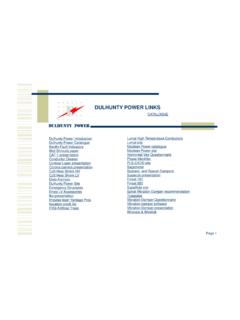Transcription of Polymer Post Insulators for 46to500kV Applications
1 CATALOG142 Polymer post Insulatorsfor 46 to 500kV ApplicationsNGK-Locke Polymer Insulators , Beach, Virginia, Polymer Insulators , post InsulatorsTABLE of CONTENTSP rocess and Design Features ..2 Materials ..3 Application Guidelines for Polymer Line Posts (LP) ..3 Catalog Number Ring Recommendation ..6 Adjustments with Corona Ring .. Line post Application Catalog Number System ..7 End Fitting & Base Variations ..7 Stud Base Series ..8 Rigid Curved Base Line post Application Catalog Number System ..10 End Fitting & Base Variations ..10 SN Shed Series ..12 SL (High Leakage) Shed Series .. Line post Application Catalog Number System ..14 End Fitting & Base Variations ..14 SN Shed Series .. Line post Application Catalog Number System ..16 End Fitting & Base Variations ..16 SN Shed Series ..17 Research & Development ..18 Packaging ..20 NGK-Locke Polymer Insulators , Inc. management systems comply with the requirements of ISO 9001:2008 (Certificate#FM36580, since 1997) and ISO 14001:2004 (Certificate #EMS96014, since 2005); the registrar for both certificates isBSI Group America Inc.
2 , based in Reston, Molding ProcessCrimping Machine & Curved DiesNGK-Locke Polymer Insulators , Inc. (NLPI) started commercial production of Polymer line post (LP) Insulators in 1994. We now offer line posts of four (4) core sizes for transmission line applicationsof various voltage classes up to and including 500 kV. All of our Insulators equip a one-piece,silicone rubber housing that is free of any joints. This housing is formed onto the core by acompression molding process. Our processes, design, and quality control provide a unique productthat is unparalleled. Process and Design FeaturesCompression Moldingallows NLPI to form a continuous, one-piece, rubber housing up to 20 feetlong. The compression molding process utilizes an appropriate pressure and temperature forvulcanizing the rubber and bonding the housing to the Bondingthrough use of a primer coating on the core, provides the needed strength tothe interface between the rubber housing and core.
3 The strength of this bond is greater than thetearing strength of the rubber housing itself. This type of bonding is important in order to preventwater/moisture from reaching the Crimping with Pressure Gradationminimizes the concentration of mechanicalstresses on the core by distributing the forces over a large core area. This process minimizes anymechanical strength degradation of the assembly. Curved Crimping Diesdesigned to match the end fitting profile produce a uniform deformation thatis coaxial with the center of the core. The uniform cylindrical shape helps to minimize mechanicalstresses on the core for any loading O-Ring Structure with RTV Silicone Sealantproduces an effective sealing O-rings integrated into the housing make positive contact with the inner surface of the endfitting. Additionally, RTV silicone sealant fills any spaces or gaps in the regions around the DoubleO-Rings.
4 (See the detailed sketch on the next page.) Rubber Cushion Structurerelieves bending stress concentrations on the core. A rubber taper thatmatches the inside shape of the end fitting is formed as a part of the housing. The rubber taper islocated at the fulcrum point of the applied cantilever load and acts as a cushion between the coreand end fitting. (See the detailed sketch on the next page)NGK-Locke Polymer Insulators , post Insulators3 NLPI s Polymer Line post InsulatorStructure of a Polymer LP Insulatorconsists mainly of an FRP Core, a Silicone Rubber Housingand Metal End Fittings. In many cases, Polymer line post Insulators are mounted to a supportingstructure (wooden or steel pole, tower, etc.) through an additional base. The FRP Core is the internalinsulating member designed to ensure the mechanical characteristics. The Silicone Rubber Housingis the external insulation, which provides the necessary leakage distance and protects the core fromthe weather.
5 Metal End Fittings are assembled to the both ends of the core for the purpose oftransmitting mechanical loads to the core. A base adapts the end fitting for mounting to asupporting Housing (Weathershed & Sheath) is 100% silicone rubber before adding fillers. The sheath and theweathersheds are formed at the same time from the same rubber mass by compression best mixture of base Polymer , fillers, and additive agents achieves an effective contamination,weather resistant, anti-tracking, and anti-erosion high quality pultruded FRP (Fiber Reinforced Plastic) rod. The rod is made with excellentalignment and distribution of fibers within an Epoxy Fittingsare ductile iron in accordance with ASTM A536. All surfaces of the end fittings to beexposed to environmental conditions are galvanized in accordance with ASTM ductile iron (rigid type base) or rolled steel (bendable type base).
6 All surfaces of the baseare Ringsare a high-grade aluminum alloy. Application Guidelines for Polymer Line Posts (LP)Failure Modes of Polymer LPTwo potential failure modes of a Polymer LP insulator are mechanical failure and sealing failure. Asealing failure allows the invasion of moisture inside the Polymer insulator. Moisture inside theinsulator leads to internal electrical puncture. A mechanical failure would be the result of a post thathas been overloaded to the point that a component has fractured. It is important that bothmechanical failure and sealing failure be considered as fatal failure modes for Polymer insulatorswhen choosing appropriate loading limits. NGK-Locke Polymer Insulators , post Insulators4A Polymer LP is a unique application compared with the other conventional Insulators . Unlikeporcelain, glass , and even Polymer suspension Insulators , only a Polymer post is used in servicewhile visibly deformed by an applied load.
7 When Insulators other than Polymer posts are deformeddue to their service load, generally those Insulators have failed. The deformation of a Polymer postcan cause the seal to fail at a lower cantilever load than the ultimate mechanical failing , the failing load of the seal and the mechanical failing load do not necessarilycorrespond in the case of Polymer Definitions: Cantilever Breaking Load (CBL), Specified Cantilever Load (SCL), ElasticLimit or Damage Limit, and Maximum Design Cantilever Load (MDCL)Cantilever Breaking Load (CBL) is defined as the maximum load that is reached during a cantileverbreaking test. Specified Cantilever Load (SCL) is defined as the cantilever load rating that isassigned by the manufacturer. The CBL should be equal to or larger than the SCL. NLPI includesa specific safety margin on the average CBL when defining the SCL rating.
8 That safety marginensures that the Insulators satisfy the SCL rating with more than a 90% probability. Both CBL andSCL are terms that define the mechanical failure point of Polymer Damage Limit or Elastic Limit for Polymer LP is a concept similar to the yield point of metalmaterials. A specific bending stress range exists for which the slope of the Deflection - Time curvebegins to rapidly increase. This is illustrated in the related curves shown at the bottom of this first chart shows different deflection levels of a Polymer LP over time, while under severaldifferent bending stress levels. The second plot is essentially a plot of the slopes of the curves onthe first chart. This plot clearly shows a transition point where the slope changes dramatically. Thistransition point corresponds to the Elastic or Damage Limit. Once this Limit is exceeded, plastic(permanent) deformation (damage) is considered to have occurred.
9 The Limit is in the range of 60%~ 80% of CBL and depends on the end fitting material and design, the core material, and theparticular combination of the two. The MDCL is the maximum working load and must not beexceeded in service. The sealing failure of a Polymer LP insulator and the Elastic Limit are importantconsiderations for the establishment of the Polymer Insulators , post Insulators5 The Relationship of the Previous Definitions:NLPI suggests setting the MDCL as 50% of the SCL for our Polymer LP Applications which alsoagrees with the 2007 version of the National Electric Safety Code. That MDCL level hassignificant margin from the Elastic Limit. Therefore, the MDCL level is considered as safe from thePermanent Damage Zone. Also, the MDCL level has margin from the Sealing Failure Zone. Inorder to maintain these safety margins, the MDCL must not be exceeded in serviceEven if a load applied to a Polymer LP application exceeds the MDCL, mechanical failure does notoccur until the SCL is reached.
10 However, the insulator may be damaged. Therefore, carefulinspection and possible replacement is required in the event that a load greater than the MDCL mayhave been applied to the insulator. Mechanical Ratingof Polymer LP is generally defined by the MDCL. A long insulator has a lowerMDCL than a short one, due to the increased moment arm for the same core size. Therefore, themechanical strength of a Polymer LP takes various different ratings according to the insulator length,even though it has the same core diameter. The MDCL vs. LP length chart shows how the MDCL changes with length. Deflectionoccurs to a Polymer post insulator when exposed to a cantilever load. This deflectionis proportional to the insulator length cubed. In some cases, the selection of Polymer LP should bebased not only on the MDCL, but also on the deflection while Loadingof vertical(conductor, accessories, ice),longitudinal (unbalanced), andtransverse (wind) loads shouldalso be considered for polymerLP Applications .



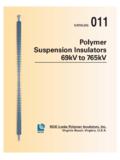
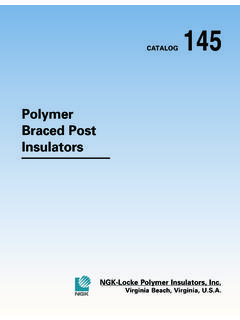
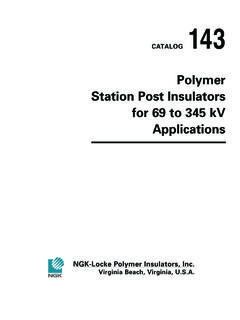
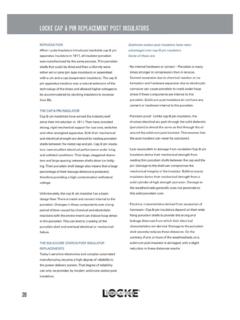



![INDEX [www.cobraautomotive.com]](/cache/preview/0/f/e/5/c/c/b/1/thumb-0fe5ccb171ee3b99232fa17454e9fec8.jpg)

